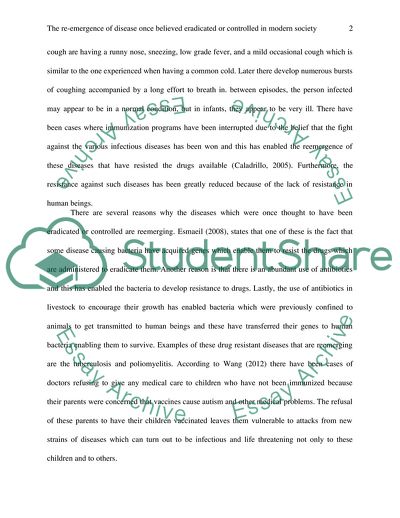The re-emergence of disease once believed eradicated or controlled in Term Paper. https://studentshare.org/medical-science/1780504-reemergence-of-diseases-as-one-of-the-biggest-health-threats
The Re-Emergence of Disease Once Believed Eradicated or Controlled in Term Paper. https://studentshare.org/medical-science/1780504-reemergence-of-diseases-as-one-of-the-biggest-health-threats.


